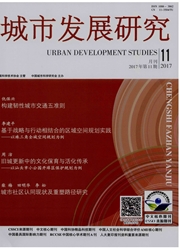

 中文摘要:
中文摘要:
城市轨道交通融资模式组成要素与分类方法的标准化是模式比选和决策的基础。通过相关理论分析、总结实践做法等方式识别轨道交通可行的融资模式。采用的理论工具包括项目区分理论、公共物品理论等,案例包括伦敦、巴黎、北京等国内外13个城市和北京4号线、深圳4号线等应用创新性融资模式的具体项目。然后基于识别的融资模式总结轨道交通融资模式的四个主要组成要素,即投资主体、运营主体、资金来源和政府支持方式,并分别归纳出每个要素包含的不同备选方案,组成融资模式比选库,进而建立了城市轨道交通融资模式的一种标准化分类方法。所有融资模式可以通过形如AiBiCiDi的四要素方案构成进行描述和区分,为融资模式评价与比选的研究与实践提供参考依据。
 英文摘要:
英文摘要:
Standardization of constituent elements and classification method of financing modes for urban rail transit is the basis of comparison and selection. Feasible financing modes for urban rail transit were identified by the method of theoretical analysis and case study. Related theories include Theory of the Distinction Project, Public Choice Theory and so on. Selected cases include 13 cities such as London, Paris and Beijing and some specific projects using innovative financing modes such as Beijing Metro Line 4 and Shenzhen Metro Line 4. Four most common constituent elements including investment entity, operation entity, sources of funding and government support form were extracted based on the identified feasible financing modes. Different options of each element were summarized, based on which a pool of all financing modes could be constructed. Furthermore, all financing modes could be expressed in a standardized format highlighting their features and facilitating comparison among various modes in the form of Ai Bi Ci Di. The conclusions provide a more standardized classification of different urban rail transit financing modes so that decision-makers could compare alternative financing modes and make a better decision in a specific project environment more easily and comprehensively.
 同期刊论文项目
同期刊论文项目
 同项目期刊论文
同项目期刊论文
 期刊信息
期刊信息
